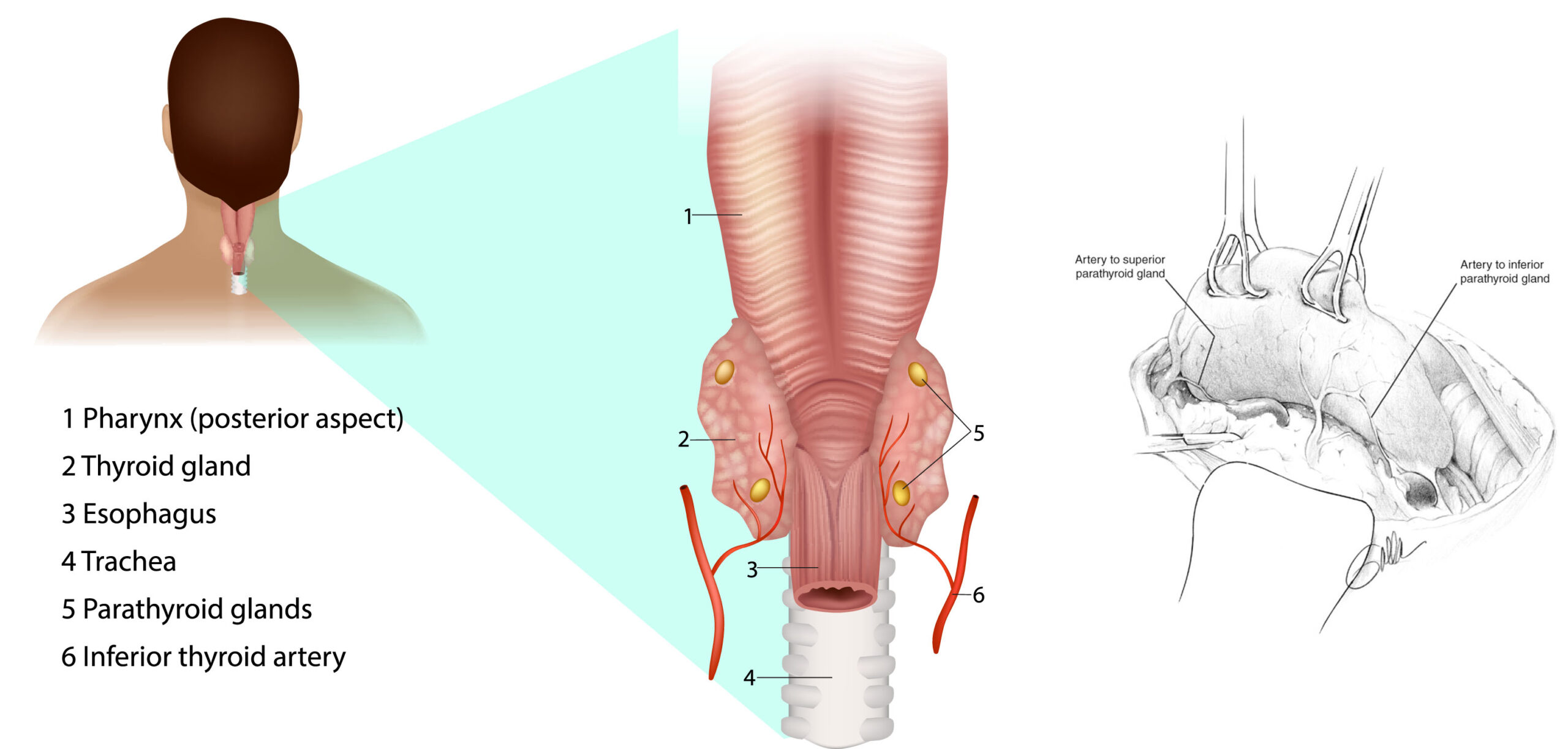In general, surgical removal of the parathyroid glands is most commonly performed for a condition called primary hyperparathyroidism. When the parathyroid glands autonomously release excess levels of parathyroid hormone (PTH), the calcium level in the bloodstream will begin to rise. If the calcium level remains abnormally high, this can lead to numerous problems such as progression of bone density loss, memory troubles, hardening of the arteries, and kidney stone formation. The World Health Organization has specified criteria that should prompt consideration of parathyroidectomy. Localizing imaging studies may be recommended to search for an enlarged parathyroid gland, or adenoma. In the vast majority of cases, one of the four parathyroid glands will be the culprit. Less commonly, two glands may be enlarged or all four glands may be overactive.
With rare exceptions, Dr. Karanfilov always recommends preoperative localization studies. The parathyroid glands, as their name suggests, are located in close proximity to the thyroid gland in the central neck. Dr. Karanfilov makes an incision in the neck and explores the areas along the sides of the thyroid gland to find the parathyroid adenoma(s). Dr. Karanfilov typically advocates for focused parathyroid surgery, as opposed to universal bilateral exploration, in order to minimize operative time and surgical risk. Since the recurrent laryngeal nerves are in the surgical field, Dr. Karanfilov performs all parathyroid surgery using vagal and RLN monitoring. Dr. Karanfilov uses a combination of techniques to assess for biochemical cure of PHPT, notably rapid serum PTH monitoring and radio-guidance.



